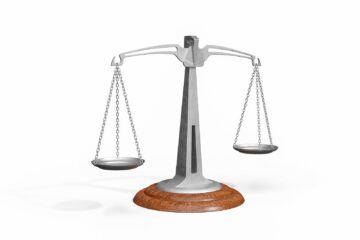![]()
Introduction:
Federalism[1] is a concept that describes the qualities of society and keeps it articulated and protected. It is designed at both the regional and the national levels to maintain unity among the states and the country.
Federalism means different things to different people. It is a modernized concept, which is generally followed in countries like the USA, Russia, Argentina, Canada, Brazil, and Switzerland. The term “federation” is derived from the Latin word “Foedus” which means ‘Treaty or Agreement’. Thus, we can say that it is an agreement between two sets of government i.e., Central and the state.
Federalism is a form that is followed by the federal government. The federal government is a type of government in which the powers of government are divided at two levels, that is at the national level and regional level. In the federal government, both these levels operate independently within their jurisdictions. From both these levels of government, the national government has more strength as compared to the regional level, but the strength keeps on changing from time to time depending upon the social-economic, and political conditions of the country.
The unitary form of government is the opposite of the federal government where the state is governed by the central government and has the power unified at a single level. In this form of government, the decision of the central government is considered Supreme. The majority of the states in the world have a unitary form of government. Around 165 of 193 UN member states follow unitary government like Britain, France, Japan, China, Italy, Norway, Sweden, Spain follows this system.
But India follows none of this form but is a combination of both these forms of government. The Constitution of India is neither purely federal nor purely unitary but is a combination of both as a federal government is the one in which the powers are divided at the national and the regional level and both the levels operate independently, whereas in unitary government, the government is governed by a single power that is at the central level and the final decision is taken by the central only.
Features of Federal Government
- Dual Government: This is one of the features of the federal government where the government is present at two levels, that is, at the central and the state.
- Division of Powers: The powers in this form of government is divided between the States and the center.
- Written Constitution: A federal government has a written constitution, where all the rules and regulations are already mentioned, and the citizens have to go by those rules and regulations only. This constitution defines the structure, the powers of each level, and the organization of these levels.
- Rigid Constitution: This is one of the features of federalism, which means that the amendments to the constitution cannot be made easily, but can only be amended by joint action of both the houses or by any other independent authority.
- Independent Judiciary: Since, in the federal government, the powers are divided at two levels, and both the levels are independent of their powers, so the judiciary for these are also independent, i.e., without interference. Example- In the USA, there is a federal government, that is for each state there is a separate supreme court, and no two states interfere with the powers of each other.
- Bicameral Legislature: Since, in federalism, the government is divided into two powers, so to make the work easier, it follows a bicameral legislature, that is, two houses of parliament. Example- In India, the parliament is bicameral, i.e., it has two houses, Lok Sabha and Rajya Sabha.
- The supremacy of the Constitution: Since it has a rigid constitution, the constitution is always considered supreme and stands at top of all laws for both the national and the state governments.
Features of Unitary Government
Unlike the federal government, which has two levels of government, a written constitution, etc, the unitary form of government is opposed to it, with different features.
- Strong Centre: Since, in unitary government, there is only one level of the government, so that government is considered the strongest, and all the decisions given by the government are considered final. Example: In India, unitary features of government is followed, where the center is given more power as compared to the state.
- Single Constitution: Unlike, in the federal government, who have the right to make their constitution, the unitary government does not allow the right to make your constitution.
- The flexibility of the constitution: As compared to the federal government, the constitution is rather more flexible, and making changes to the constitution is not a difficult task.
- Single Citizenship: Unlike in the federal government, which provides you with dual citizenship, one of the states and one of the countries, but a unitary form of government allows citizenship for a country. It does not provide dual citizenship to any of its citizens. Example: In India, single citizenship is prevalent, unlike in the USA, where a person gets dual citizenship.
- Existence of Union Territories: Union Territories are although sometimes considered a different state, they are not independent, but are governed by the central government.
- Emergency Provision: Even in a unitary form of government, emergency provisions exist which are absent in the federal government.
- Appointment of Governor by President: Governor is the head of the state, and with this, the appointment of the governor must be done by the state government, but the appointment is done by the President which is a complete violation of federalism.
- Single Unified Judiciary: Unlike in federal government, were due to the two levels, the judiciary was independent, and none of the states’ judiciary interfered with the other, but in unitary government, only a single unified judiciary is present, that is, for any case, the final decision will be of the judiciary. Example: In India, a system of a single unified judiciary is followed, where the apex court is the Supreme Court, and the judgment given by the Supreme Court is considered final.
- Centralized Election Machinery: There is only one election commission committee that conducts elections in both the center and state.
Federalism in India
In the case S.R.Bommai v Union of India[2], the federalism model followed in the US is invoked, thereby making it clear that it is a federation of states. Hence, are independent, sovereign in their territories. The territories in the federation of the states cannot be altered, but in India, the parliament has the power to admit new states, create new states, alter their boundaries and names, unite or divide the states[3]. The court also noted the existence of several provisions of the constitution, that allowed the center to override the powers of the state. In India, the residuary powers of legislation, i.e., to make law is not specified in the constitution, but in the US, the residuary powers are with the states. Thus, due to the mixture of features of the Indian Constitution with that of both federal and unitary form of government, the Indian Constitution is a “quasi-federal” constitution.
Features of Indian Constitution
Federal Features
- India has the government at two levels, both the state and the center.
- Powers are divided between the center and state, as mentioned in the seventh schedule[4] of the Indian Constitution, which has three lists: Union, State, and the Concurrent lists.
- The constitution is considered supreme. Its basic structure cannot be amended that is laid done by the judiciary. The constitution is considered the supreme law in India.
- Indian constitution provides an independent and integrated judiciary, as the lower and district courts are at bottom levels, high courts at state levels, and the supreme court at the national level and is also at the topmost position.
- The Indian constitution is a written and rigid one.
- In India, bicameral legislation is followed, i.e., it has two houses of parliament- Lok Sabha, and the Rajya Sabha.
Unitary Features
- Indian Constitution is a mixture of flexibility and rigidity, i.e., certain provisions can easily be amended, but for some amendments, a joint session of houses is required and is not easy.
- In India, more power lies with the center, i.e., more power is guaranteed to the Union list. In the concurrent list, the parliament can make laws that can be overridden by the state on few matters, but generally, the state makes laws under the state list.
- Although there is bicameral legislation, in the upper house, there is an unequal representation, and the seats are based upon the population of the state. Example: Uttar Pradesh has 31 seats due to the highest population and Goa has 1 seat in Rajya Sabha due to less population.
- In India, the executive in both the center and the state is also considered the part of the legislature. Thus, with no proper division of the powers.
- Lok Sabha is considered to be more powerful than Rajya Sabha as they are more in number and also Lok Sabha has more power over money-related matters, making it against the federal character.
- The center is provided with emergency powers. Thus, in case of emergency, the center has increased control over states, thereby decreasing the autonomy of the state.
- There is no separate judiciary at the center and the state levels. The Indian judiciary is integrated.
- In India, only single citizenship is available to all the citizens, as they are not allowed to be the citizen of the state as well. Thus, fostering a feeling of nationality and unity among people.
- Parliament has the power to alter, admit, create new states, unite, or divide states, or create boundaries or change the names[5].
- The president appoints the CAG, who audits the accounts of the center and the state.
- In India, the state government does not have the right to remove the government officials at the state level also, removing the election commissioner of a state, judges of the high courts, or the chairman of the state public service commissions is not the power of the state.
Dr. Ambedkar listed several features in our constitution that drafted our constitution and made it a legal document for providing justice to the people. In the constituent assembly in November 1949, the features[6] he introduced were:
- Article 246: It distributes the legislative powers between the Union and the states. It also provided the union an exclusive power to legislate on the matters in list 1 and concurrent power to legislate in list 3 of schedule 7 of the constitution.
- Article 248 (Residuary Powers): It gave the parliament an exclusive power to make laws in matters not mentioned in the Concurrent List or State List.
- Article 249: It gave Parliament power for the matters in the state list that were of national interest.
- Article 250: It gave parliament the power to any matter in the state list, if an emergency is in operation.
- Article 252: It gave parliament the power to legislate on two or more states with their consent.
- Article 352 and 353: Proclamation of emergency and the effect of such proclamation.
- Article 368: Amendment of the constitution.
Conclusion
Dr. Ambedkar drafted the Indian Constitution and thereby formed a document to provide justice to people across the country. Federalism is a concept that describes unity among the states and the center. Therefore, India has a few characteristics of a unitary government and some of them represent the federal government. Hence, the Indian constitution is quasi-federal, which is more inclined towards the Centre. Thus, the Indian Union is a unitary state with subsidiary federal features rather than a federal state with subsidiary unitary features.
References:
[1] https://en.wikipedia.org/wiki/Federalism#:~:text=Federalism%20is%20a%20mixed%20or,in%20a%20single%20political%20system.
[2] 1994 AIR 1918 (India)
[3] Article 3, Indian Constitution
[4] 7th Schedule- Lists, Indian Constitution
[5] Id. at 4
[6] The article, Indian Constitution



0 Comments